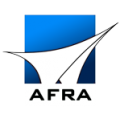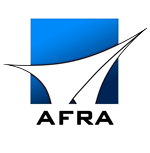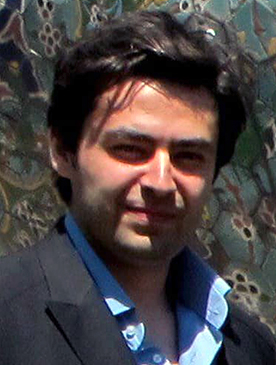Fabric structures are used in building architecture due to their flexibility and aesthetic appeal.
Some of the popular types of tent or fabric structures include:
– Dome: A structure with a spherical shape, often used for public spaces such as stadiums, concert halls, assembly spaces, accommodations, and camping sites.
– Geodesic Structure
.

The use of dome-shaped tent structures, compared to other structures, has many advantages. Below are some specific advantages of using dome-shaped tent structures:
Wind and Rain Resistance: Due to their shape and evenly distributed forces, dome-shaped tent structures have high resistance against wind and rain.
Beautiful and Attractive Design: The dome shape adds a unique beauty and attractiveness to the environment and can be recognized as a symbol of architecture and unique design.
More Interior Space: Because of the dome shape, the interior space of a dome structure is larger and more useful, allowing for optimal utilization of space.
Multi-purpose Use: Dome tent structures can be used for various purposes including camping, events, stadiums, and public spaces.
Lightweight and Portable Structure: Compared to traditional structures, constructing a dome tent structure is lighter and more portable, making it easier to transport.
Lower Construction and Maintenance Costs: Building and maintaining a dome tent structure is usually much cheaper than traditional structures, requiring lower maintenance costs.
Overall, the use of dome tent structures as a modern, economical, and beautiful option for various environments is justified.
Arch: A tent structure with an arch shape, used to provide coverage over fields, urban streets, stadiums, public buildings, and tent parking lots.

Canopy: A structure used as a cover for building entrances, seating areas in parks and public spaces, and as awnings in outdoor spaces in gardens and villas.

Using tents as a type of fabric or canvas structure has numerous advantages. Below are some of the advantages of using tents:
Easy Transportation: Tents, due to their simple structure and lightweight materials, are easily transportable. This allows tents to be easily moved to different locations.
Quick Installation and Replacement: Installing and replacing tents is straightforward and usually takes only a few hours. This feature is advantageous for short-term activities.
Low Costs: Tents generally have lower production and maintenance costs compared to other structures.
Flexibility in Use: Tents can be used for various occasions and in different weather conditions.
Overall, tents are considered one of the most popular choices in fabric structures due to their simplicity, affordability, portability, and flexibility.
Fabric umbrella (Tent): A structure that is used for events, exhibitions and on the terrace of villas and apartments and in gardens and restaurants.

Sports Roof: A structure used to provide coverage over sports grounds such as tennis, basketball, football, etc.

Tent roofs are used to provide coverage over sports grounds. These structures are designed for various sports venues such as tennis, football, basketball, etc., and have the following characteristics:
Column-free Large Spaces: Tent structures cover some sports venues like tennis and football without the need for central columns, creating open and large spaces for spectators.
Flexibility in Design: These structures can be designed in various shapes and heights due to their flexibility, tailored to the needs of sports venues.
Resistance to Weather Elements: Fabrics used in sports roof tents are typically resistant to wind, rain, and UV rays, ensuring long-term durability and resistance of the structure.
Suitable Coverage for Spectators: Sports venue roofs provide suitable shade and coverage for spectators, creating favorable conditions for watching sports.
With these features, fabric structures are considered a popular and efficient choice for sports facilities.
Car Park Canopy: A structure used as a covering for car parks.

Below are the features and benefits of a Car Park Canopy:
Protection for Vehicles: The canopy shelters vehicles from weather elements such as rain, snow, sunlight, and also protects them from damage due to UV penetration.
Design and Usage Variety: Car park canopies come in various designs including flat roofs, curved arches, and other designs, offering versatility in design and usage.
Prevention of Vehicle Heating: During hot seasons, car park canopies can prevent vehicles from heating up due to direct sunlight exposure, thus reducing vehicle damage and preserving vehicle health.
Overall, car park canopies serve as an efficient solution for protecting vehicles and users in both public and private parking spaces.
The Saddle Tent structure is a type of tent structure that resembles the shape of a horse saddle, sloping on both sides.

Comparison of Different Types of Tent Structures:
Dome, Arch and Canopy
Dome: It features a rounded or arched dome structure, typically constructed from metal elements and PVC fabrics.
Arch: It has an arched shape, usually made of metal or wooden structures, and is used to cover fields, streets, parking lots, bridges, etc.
Canopy: It is a flat covering typically used for outdoor spaces such as entrances, parking lots, and public areas. Its shape is usually rectangular, square, or circular.
Use and application:
Dome: The primary use of Dome tent structures is in buildings and public spaces such as stadiums, sports arenas, cultural centers, and camping sites.
Arch: Arch structures are often used for arched and curved shapes, including bridges and roads.
Canopy: Canopies are primarily used in outdoor spaces such as parking lots, entrances, open areas, and shops.
Resistance and stability:
Dome: Due to its dome-shaped structure and curved arches, Dome tent structures are generally resistant and stable.
Arch: Similarly, Arch tent structures are typically resistant and stable due to their arched structure and metal or wooden arches.
Canopy: The resistance and stability of Canopy structures depend on the materials used for construction and the type of fabric used, but they are generally suitable for smaller environments and less demanding applications.
Ultimately, the choice between these tent structures depends on the needs, environment, usage conditions, and desired design. Each of these structures has its own advantages and limitations that should be considered based on the intended circumstances.








